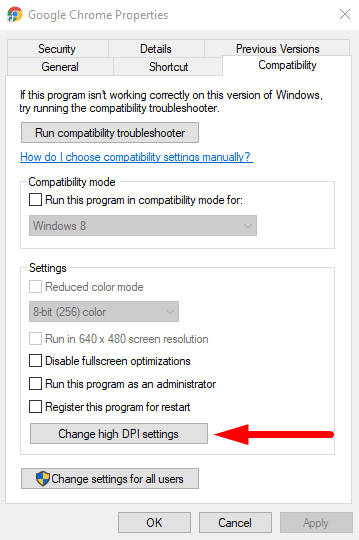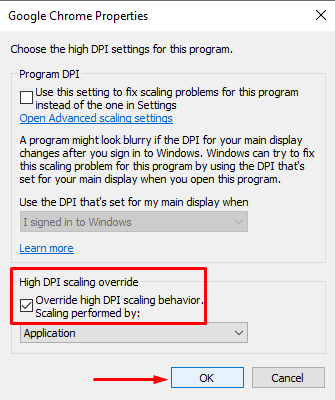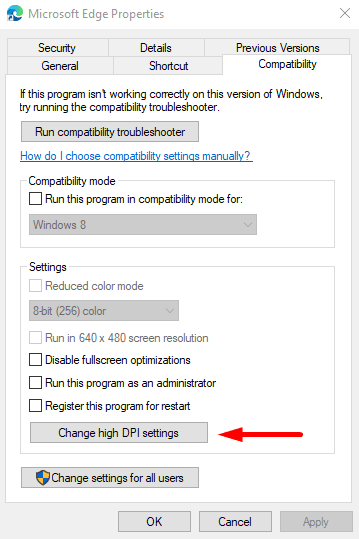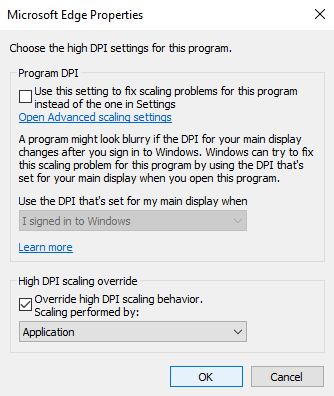In recent days, some users reported experiencing a blurry file-open dialog with the Chromium-based Chrome and Edge browsers. The dialog displays blurry or indistinctly visible fonts that make it hard to read. If you’re also affected by this problem, read this post. In it, we will show a quick way to fix the blurry file-open dialog in Google Chrome and Microsoft Edge.
Fix Blurry File Open dialog in Google Chrome
To fix the blurry File open dialog in Google Chrome, follow the below suggestions:
- First of all, Press Win+D keyboard shortcut to switch to your desktop screen directly.
- Right-click on the shortcut icon and select Properties from the context menu.
- Alternatively, right-click on the Chrome icon available on the taskbar.
- From the context menu, again right-click on the Chrome entry
- Next select Properties option from the menu list.
- In the Properties window, switch to the Compatibility tab.
Finally, go to the Settings section and select Change high DPI settings button.

This will open a new dialog where you have to mark the checkbox next to the Override high DPI scaling behavior.
Also, make sure the Scaling performed by is set to the Application.
Then hit OK > Apply to save the changes.

After following the above instructions properly, check for the blurry file open dialog. It should now be fixed and back to its high-resolution.
Read: Fix Blurry Fonts problem in Windows.
Fix Blurry File Open dialog in Microsoft Edge
If you’re a Microsoft Edge user, then let me know that the steps to fix this problem in Microsoft Edge are somewhat similar to those we followed in Google Chrome. So, let’s see this.
Right-click on the Microsoft Edge shortcut icon and select Properties from the context menu.
Once the Properties window opens, click on the Compatibility tab.
There go to the Settings section and select Change high DPI settings button.

In the new dialog box, check the checkbox next to the Override high DPI scaling behavior.
Also, make sure the Scaling performed by is set to the Application.
Now finally select OK and then Apply button to save the changes.

Note: In case you don’t have the Chrome/Edge desktop icon, you can find using the Windows search bar. To get it, press Win+Q and type chrome/edge. Then right-click on the search result and select Open file location. This will open the file explorer at the shortcut to Chrome/Edge. So, right-click on the Google Chrome/Microsoft Edge executable file and then select Create shortcut.
That’s it. I hope you found this guide helpful. If you have any queries, let us know in the comment box.
Leave a Reply